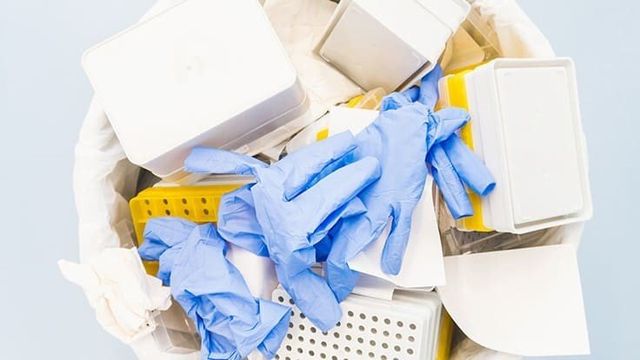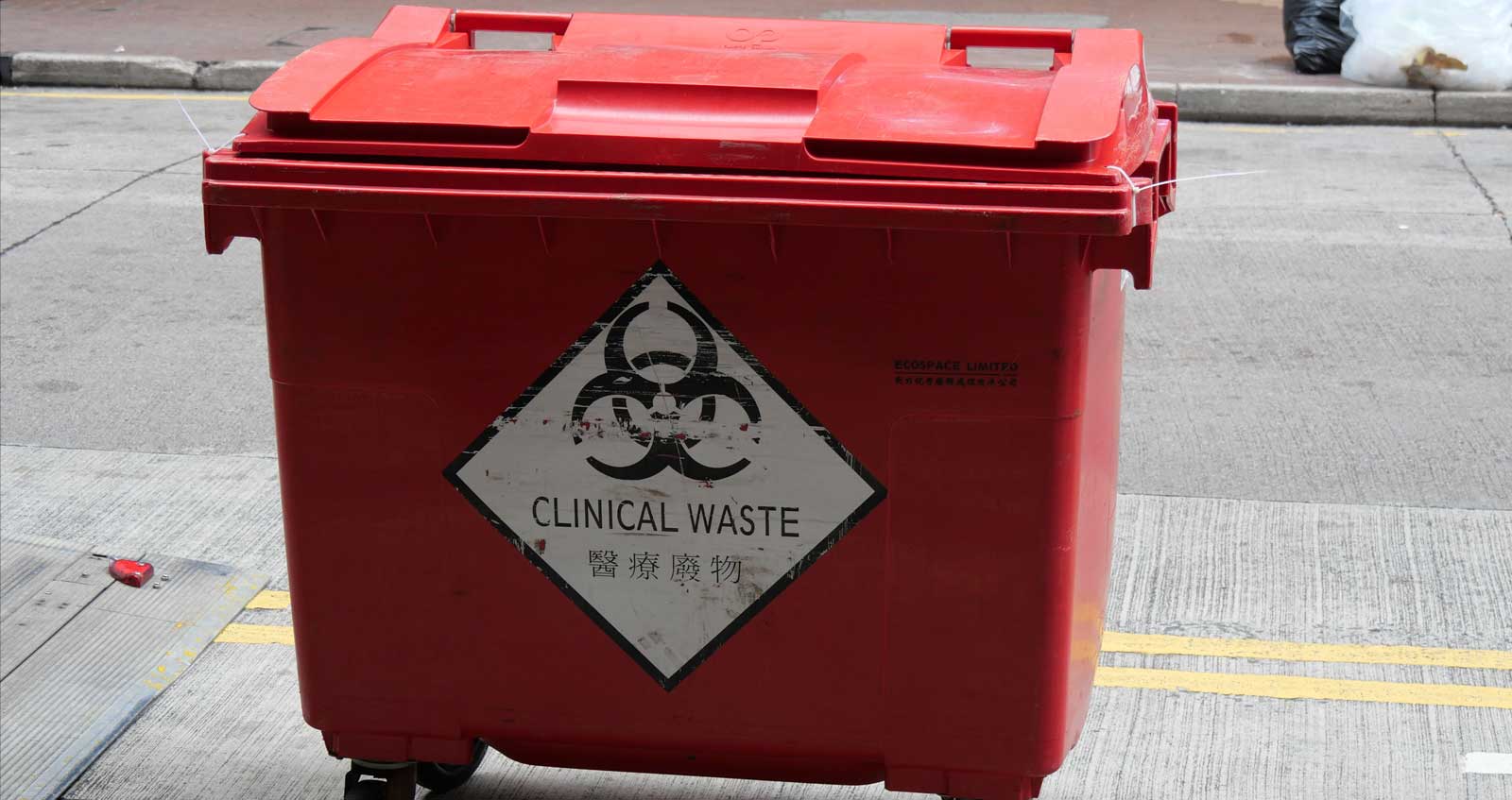Guardians of Sanitation: Resident Medical Waste Removal Service for Your Assurance
Guardians of Sanitation: Resident Medical Waste Removal Service for Your Assurance
Blog Article
Minimize Costs and Take Full Advantage Of Safety And Security: Effective Medical Waste Disposal Methods
Effective medical waste disposal methods are crucial for health care facilities to take full advantage of and minimize prices safety. By implementing correct segregation and classification, efficient packaging and labeling, secure transportation and handling, effective therapy and disposal approaches, and compliance with regulative guidelines, healthcare facilities can ensure the safe and liable monitoring of medical waste.

Appropriate Partition and Categorization
Correct segregation and categorization are essential elements of reliable clinical waste disposal methods, guaranteeing the security of medical care workers, the public, and the setting - medical waste removal near me. medical waste disposal services with WasteX. By separating various kinds of clinical waste at the factor of generation, healthcare centers can decrease the risk of cross-contamination and prospective injury to people and communities
One of the essential variables in proper partition is the identification and classification of clinical waste. This involves classifying waste into different teams, such as infectious, dangerous, contaminated, or pharmaceutical waste. Each category needs particular handling, storage, and disposal methods to stop any kind of damaging impacts on human health and the atmosphere.
Furthermore, correct segregation additionally consists of the usage of color-coded labels and containers to plainly recognize and set apart the various kinds of clinical waste. This helps medical care workers and waste management employees to quickly acknowledge and take care of the waste properly. Red containers may be utilized for transmittable waste, while yellow containers might be marked for hazardous waste.
Along with partition, appropriate classification likewise involves the right product packaging and containment of clinical waste. This ensures that waste is safely kept and moved without posturing any kind of risks to people or the atmosphere. Using watertight and puncture-resistant containers, as well as correctly sealing and identifying them, helps to stop any type of unexpected exposure or release of dangerous compounds.
Efficient Product Packaging and Classifying
Effective packaging and labeling play a crucial duty in guaranteeing the effective and safe disposal of medical waste. Correct product packaging is vital to avoid leakage, breakage, or spillage throughout transportation and handling. It helps to decrease the threat of contamination and safeguards health care workers, waste administration employees, and the environment from possible threats.
Medical waste ought to be packaged in sturdy and watertight containers that are resistant to puncture and damage. These containers ought to be properly secured to avoid any leak. Furthermore, the packaging ought to be able to stand up to the problems of transportation, including temperature variants and misuse.
Identifying is just as essential as it provides important info regarding the materials of the waste and any possible risks associated with it. The tags ought to include the name of the health care facility, the sort of waste, and any kind of special delivery directions. Standard and clear labeling guarantees that waste administration personnel can conveniently identify and handle the waste suitably.
Effective packaging and labeling likewise aid in the appropriate segregation and classification of medical waste. Clear labeling enables very easy recognition of different waste streams, such as transmittable waste, sharps, or pharmaceutical waste. This assists in simplifying the disposal process and making sure that the waste is dealt with or taken care of according to regulative guidelines.
Safe Transportation and Handling
Ensuring the secure transport and handling of clinical waste is of utmost relevance in order to protect against any type of potential health and environmental threats. Clinical waste, such as sharps, contaminated materials, and pharmaceutical waste, have to be appropriately packaged and managed to minimize the threat of exposure to dangerous compounds and pathogens.
Moving clinical waste needs conformity with strict guidelines and standards set by ecological firms and regional authorities. These regulations aim to secure the health and safety and security of workers included in waste monitoring and prevent the launch of unsafe materials into the environment.
To make certain secure transportation, medical waste needs to be put in leak-proof and puncture-resistant containers that are properly secured and classified. Additionally, it is critical to use specific lorries furnished with suitable safety and security attributes to deliver medical waste. medical waste disposal services with WasteX.
Handling medical waste likewise requires proper training and adherence to safety protocols. Workers associated with the handling of clinical waste need to put on suitable personal protective equipment (PPE) such as gowns, masks, and handwear covers to decrease the threat of direct exposure. They ought to also follow stringent hygiene methods to avoid the use this link spread of infections and ensure the secure disposal of waste.
Efficient Treatment and Disposal Methods
Carrying out appropriate treatment and disposal approaches is critical in handling medical waste effectively and lessening prospective health and wellness and ecological dangers. Medical waste, that includes sharps, contagious products, chemicals, and pharmaceuticals, can pose significant risks otherwise taken care of and dealt with correctly. There are numerous therapy and disposal techniques readily available that adhere to regulatory guidelines and advertise risk-free techniques.
One common technique is incineration, which includes shedding the waste at heats. Incineration works in destroying microorganisms and lowering the volume of waste, however it can launch unsafe toxins into the air if not correctly regulated. It is crucial to make use of modern incinerators outfitted with exhaust control modern technologies.
An additional approach is autoclaving, which utilizes heavy steam and pressure to decontaminate the waste. Autoclaving works in eliminating microorganisms and lowering the volume of waste, yet it calls for cautious surveillance and maintenance to make certain correct performance. The decontaminated waste can after that be safely taken care of in a land fill.
Chemical therapy is another choice, which involves making use of anti-bacterials or various other chemicals to neutralize microorganisms. This method is frequently used for fluid waste, such as lab samplings. It is vital to make use of appropriate chemicals and adhere to correct treatments to ensure reliable treatment and stop ecological contamination.

Compliance With Regulatory Standards
Following governing standards is important in ensuring appropriate compliance with clinical garbage disposal methods. These standards are put in area to shield public health and wellness, avoid ecological contamination, and keep office security. Compliance with regulatory guidelines is crucial for healthcare facilities, as non-compliance can lead to penalties, penalties, and reputational damages.
Regulative guidelines detail the appropriate handling, storage, transportation, and disposal of medical waste. They give details instructions on product packaging needs, labeling, and record-keeping. These guidelines additionally address the segregation of various waste streams, such as sharps, transmittable waste, and pharmaceutical waste. Medical care centers link need to make sure that their waste monitoring practices line up with these guidelines to minimize the threat of direct exposure to hazardous materials and stop the spread of infections.
To preserve compliance, healthcare centers should establish comprehensive waste management programs that consist of team training, normal audits, and ongoing tracking. It is vital to keep current with any adjustments or updates to regulative guidelines, as methods may advance in time. By remaining informed and carrying out proper protocols, health care facilities can minimize the possibility for regulatory infractions and safeguard the health and wellness and safety of their team, clients, and the bordering neighborhood.
Verdict
To conclude, applying reliable medical garbage disposal strategies is critical for optimizing and reducing costs safety and security. Correct partition and categorization, reliable product packaging and labeling, safe transportation and handling, and efficient treatment and disposal techniques are vital steps to make sure compliance with governing standards. medical waste removal service. By sticking to these strategies, health care facilities can shield the environment and public wellness while also lowering monetary worries connected with medical waste management
By executing proper partition and categorization, efficient product packaging and labeling, risk-free transport and handling, reliable therapy and disposal methods, and conformity with governing guidelines, medical care facilities can make certain the risk-free and accountable monitoring of clinical waste. Red containers might be made use of for transmittable waste, while yellow containers may be assigned for dangerous waste.
Standard and clear labeling this hyperlink makes sure that waste management employees can easily recognize and take care of the waste appropriately. (medical waste disposal services with WasteX)
Clear labeling permits for very easy recognition of different waste streams, such as transmittable waste, sharps, or pharmaceutical waste. These standards also resolve the segregation of various waste streams, such as sharps, infectious waste, and pharmaceutical waste.
Report this page